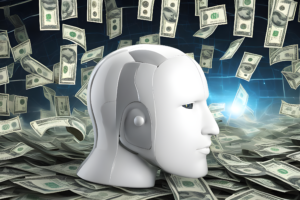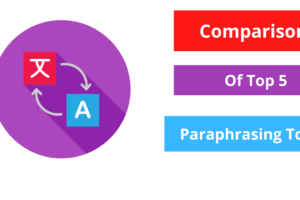|
Getting your Trinity Audio player ready...
|
Table of Contents
Introduction to AI
Artificial Intelligence does not need any introduction anymore in 2021-2022. Just for reference, AI Stands for Artificial Intelligence. It is popularly called AI. AI is contributing to all areas now. It is already in practice for a long but it is getting its pending due over a century of the journey and is in full swing now.
We, Humans, are well recognized by our visual perception, speech recognition, decision making, and translation between languages. We, humans, are considered the most intelligent creatures on earth. Incorporating all human qualities in computer systems to perform tasks that normally require human intelligence can be referred to as Artificial Intelligence.
The system has human intelligence is treated as Artificial humans.AI enables us to build efficient software that can improve health care, enable people to overcome physical disadvantages, empower smart infrastructure, create incredible entertainment experiences, and even save the planet as well.
You can say Artificial Intelligence is an area of computer science that focuses on the creation of intelligent machines that performs like humans. Majorly AI contributes the areas like Learning, Problem Solving, and Speech Recognition, and Robotics.
“Artificial Intelligence is the creation of software that imitates human behaviors and capabilities”
Key Elements of AI
There will be 5 key elements of AI. Below are the 5 key elements of AI.
- Machine Learning– This is the foundation for an Artificial Intelligence System.ML teaches a computer model to make predictions and draw conclusions from data.
- Anomaly Detection – It must have the capability to automatically detect errors or unusual activity in a system.
- Computer Vision – The system must be capable enough to interpret the world visually via cameras, video, and images.
- Natural Language Processing – AI system must be capable enough to interpret written or spoken language, and respond in the same language.
- Conversational AI – AI system must be capable enough to participate in a conversation.
Introduction to ML
Machine Learning is a core part of Artificial Intelligence. Machine Learning is the major application of AI that provides systems the capability to automatically learn and improve from experience without being explicitly programmed. Machine Learning also provides the way to develop programs that can access data and use it for intelligent decision-making.
Machine Learning begins with data analysis and makes better decisions in the future based on the examples that we provide. The aim of data analysis is to allow computers to become more intelligent and can take action based on results of data analysis in form of examples or cases without human intervention.
Machine Learning is the foundation for most AI solutions. Let’s understand by the real-world example how machine learning can be useful to solve a difficult problem.
For example, sustainable farming techniques are essential to maximizing food production while protecting a fragile environment. An agricultural technology company Yield based in Australia, uses sensors, data, and machine learning to help farmers make informed decisions related to weather, soil, and plant conditions.
How Machine Learning Works?
So how do machines learn?
The short answer is from data. Currently, we create huge volumes of data as we go about our everyday lives. Data varies from text messages, emails, social media posts, photographs, and videos over smartphones.
We generate massive amounts of information. Much More data is still generated by millions of sensors used in our homes, cars, cities, public transport infrastructure, and factories.
Data scientists can use all of that data to train machine learning models that can make predictions and inferences based on the relationships they find in the data.
For instance, suppose an environmental conservation organization wants volunteers to identify and catalog different species of wildflowers using a phone app.
The process flow will be similar to below
- Botanists and Scientists collect data on wildflower samples.
- The project team Labels the samples with the correct species.
- Now The Labeled data is getting processed using an algorithm that finds relationships between the features of the samples and the labeled species.
- The results of the algorithm are encapsulated in a model.
- Now New samples are well recognized to the model with the correct species labels.
What Is Anomaly Detection?
For example, if you’re creating a software Fraud Protection System to monitor credit card transactions and detect unusual usage patterns that might indicate fraud.
These kinds of scenarios can be addressed by using anomaly detection – a machine learning-based technique that analyzes data over time and identifies unusual changes.
Let’s understand how anomaly detection might help in the racing car scenario.
- Sensors in the car collect information such as engine revolutions, brake temperature, and so on.
- An anomaly detection model is trained to understand expected fluctuations in the information measurements over time.
- If measurement occurs outside of the normal expected range, the model reports an anomaly that can be used to alert the race engineer to call the driver in for a pit stop to fix the issue before it forces retirement from the race.
What Is Computer Vision?
Computer Vision is an area of AI that deals with visual processing. Let’s explore some of the key possibilities that computer vision brings to the system.
Computer Vision Models And Capabilities
Most computer vision solutions are based on machine learning models that can be applied to visual input from cameras, videos, or images. The following table describes common computer vision tasks.
1. Image Classification
Image classification basically involves training a machine learning model to classify images based on their contents.
For instance, In a traffic monitoring system, you can use an image classification model to classify images based on the type of vehicle they contain, such as taxis, buses, cyclists, and so on.
2. Object Detection
An Object detection machine learning model is trained to classify individual objects within an image and identify their location with a bounding box.
For instance, In a traffic monitoring system might use object detection to identify the location of different classes of vehicles.
3. Semantic Segmentation
Semantic Segmentation is an advanced machine learning technique in which individual pixels in the image are classified according to the object to which they belong.
For instance, a traffic monitoring system might overlay traffic images with “mask” layers to highlight different vehicles using specific colors.
4. Image Analysis
You can create AI-based systems that combine machine learning models with advanced image analysis techniques to extract information from images, including “tags” that could help catalog the image or even descriptive captions that summarize the scene shown in the image.
5. Face Detection, Analysis, and Recognition
Face Detection is a specialized form of object detection that locates human faces in an image. This can be combined with classification and facial geometry analysis techniques to infer details such as age and emotional state, and even recognize individuals based on their facial features.
6. Optical Character Recognition (OCR)
Optical character recognition is a technique used to detect and read the text in images. You can use OCR to read the text in photographs (for example, road signs or storefronts) or to extract information from scanned documents such as letters, invoices, or forms.
|
Service |
Capabilities |
|
Computer Vision |
This service analyzes images and videos and extracts descriptions, tags, objects, and text. |
|
Custom Vision |
This service trains custom image classification and object detection models using your own images. |
|
Face |
This service enables you to build face detection and facial recognition solutions. |
|
Form Recognizer |
This service extract information from scanned forms and invoices. |
What Is Natural Language Processing?
Natural Language Processing is the area of AI that deals with understanding written and spoken language.
NLP enables you to create software that can be
- Analyzed & Interpret text in documents, emails, and other sources.
- Interpret Spoken language, and synthesize speech responses.
- Automatically translate spoken or written phrases between languages.
- Interpret commands and determine appropriate actions.
For instance, Starship Commander is a VR game from Human Interact, which takes place in a science-fiction world. The game uses natural language processing to enable players to control the narrative and interact with in-game characters and starship systems.
Conversational AI
Conversational AI is the area that deals where AI agents participate in conversations with humans. Most commonly, conversational AI solutions use bots to manage dialogs with users. These conversations can take place through website interfaces, email, social media platforms, messaging systems, phone calls, and other channels.
Bots can be the basis of AI solutions for below specified purposes.
- Customer Support for Products or Services.
- Reservation Systems For restaurants, airlines, cinemas, and other appointment-based businesses.
- Health care consultations and self-diagnosis.
- Home Automation and Personal Digital Assistants.
Conclusion
That`s all about what is artificial intelligence? How Does AI work?. Thanks for reading the post. I hope it has given you a fair idea about how to build new AI-based software. If you like our work please like, subscribe, and share our blog to extend its reach to the intended audience to get a fair idea about Artificial Intelligence as it is needed to sooner or later everyone has to jump into it. The early start may give a good advantage. So start exploring AI as much as you can.
Other AI Articles




